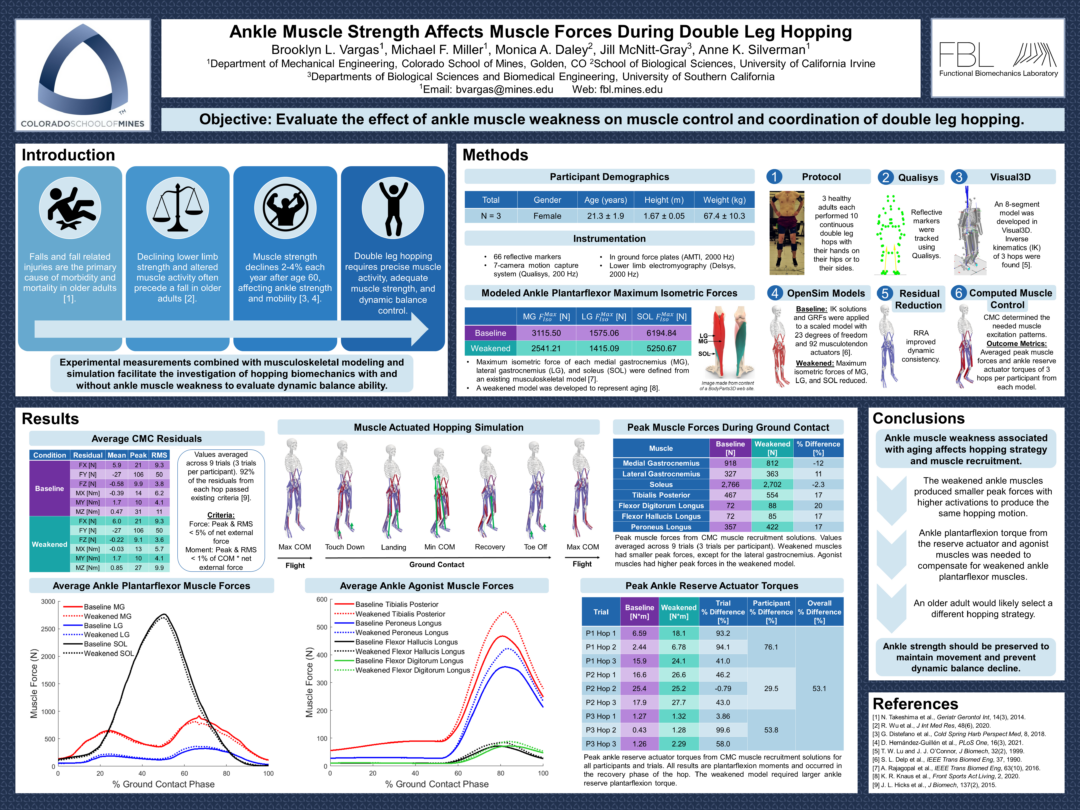Poster Presentation by Brooklyn Vargas
Senior, Mechanical Engineering
Mentor: Anne Silverman, Mechanical Engineering
Mentor: Michael Miller, Graduate Student in Mechanical Engineering
Abstract:
Falls are a primary cause of morbidity and mortality in older adults, with dynamic balance decline often being the precursor to a fall. Declining lower limb strength has been linked to dynamic balance decline. Therefore, this study will evaluate the effect of ankle muscle weakness on muscle control and coordination of double leg hopping, a task that requires precise dynamic balance control.
A healthy adult performed ten continuous double leg hops. Motion capture and ground reaction forces were collected. A model was developed in Visual3D (C-Motion, Inc.), and inverse kinematics (IK) of three hops were computed. The GRFs along with the IK solutions were exported to OpenSim v 4.4 and applied to a scaled musculoskeletal model. A Residual Reduction Algorithm (RRA) improved dynamic consistency. Computed Muscle Control (CMC) then determined the needed muscle excitation patterns. A weakened model was developed with reduced maximum isometric force of the MG, LG, and SOL to represent aging.
Peak dynamic force from MG and SOL decreased by 16% and 3% respectively in the weakened model, while the LG increased by 16%, compensating for MG force deficits. Several agonist muscles in the weakened model increased their peak force output, suggesting they are compensating for the weakened MG, LG, and SOL. The ankle reserve actuator peak torque increased by 135% in the weakened model. These findings indicate ankle muscle weakness associated with aging affects hopping strategy and muscle recruitment. Strength should be preserved to maintain movement and prevent dynamic balance decline.
